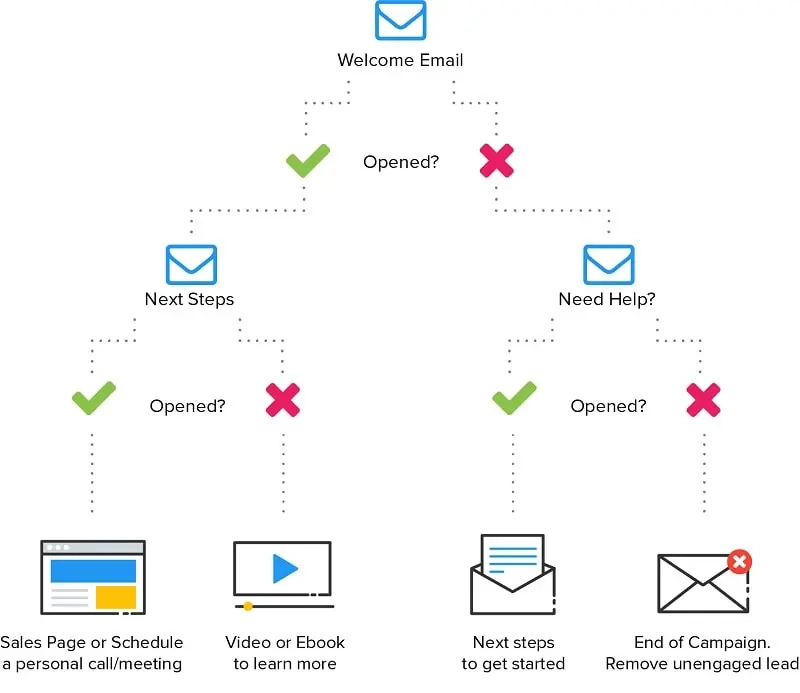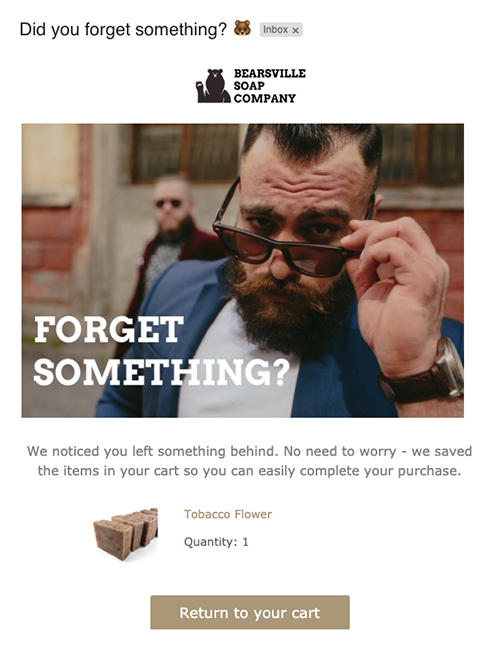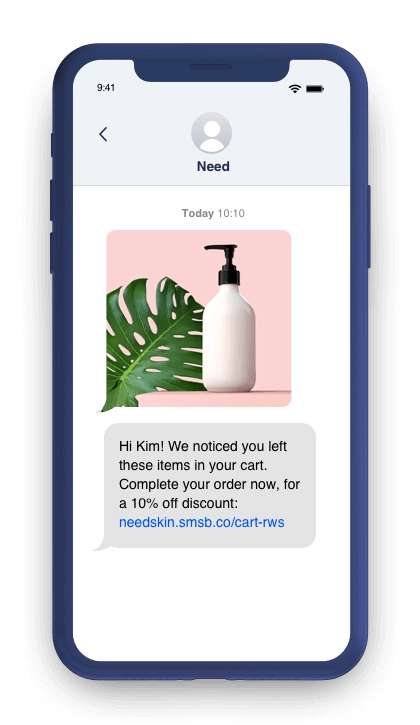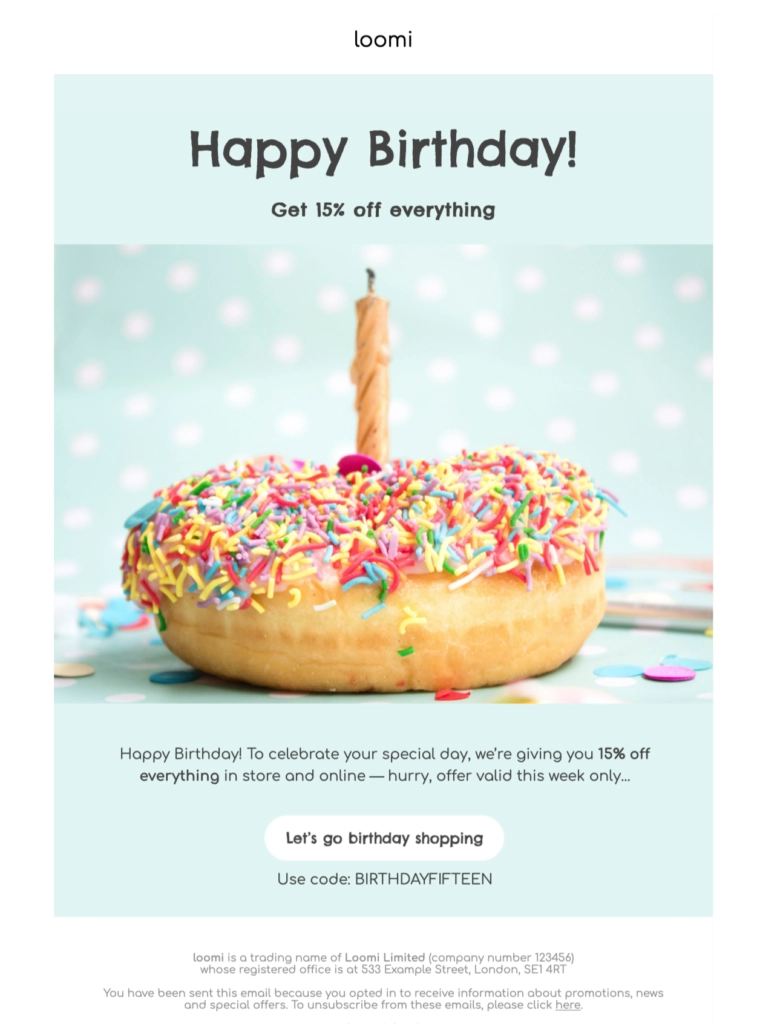There’s a lot that goes into running an eCommerce business – especially if you’re doing it all yourself. Using eCommerce marketing automation lets you achieve more without increasing your workload.
You can use marketing automation to handle all kinds of time-consuming tasks and achieve better results from them. With the right automation strategy, you can increase sales, improve your customer experience, and achieve all of this without putting in extra hours of work.
What exactly is marketing automation, how can you use it for your eCommerce business, and why is it important? We’ll cover this all in our complete guide below.
- What is Ecommerce Marketing Automation?
- How Does Ecommerce Marketing Automation Work?
- Advantages Of Ecommerce Marketing Automation?
- Types Of Marketing Automation
- 10 Ecommerce Marketing Automation Strategies
- Ecommerce Marketing Automation Software
What is Ecommerce Marketing Automation?
Ecommerce marketing automation is the process of putting your online store’s time-consuming manual tasks on autopilot. Ecommerce marketing automation software can be used to manage and control repetitive tasks. Not only does this save any eCommerce business time, but it also ensures a greater level of control and accuracy in marketing tasks.
There are many processes that go into successful eCommerce marketing. This includes tasks like cart abandonment campaigns, sending transactional emails, welcoming new subscribers, running promotions, and more. All of these tasks can be automated.
By investing in eCommerce marketing automation, businesses can save time, achieve better marketing results, and scale up their operations a lot more easily. Marketing automation reduces human error, and it allows you to get more done with fewer people.
With a carefully planned eCommerce marketing automation strategy in place, growing your online store will become a lot easier.
How Does Ecommerce Marketing Automation Work?
Ecommerce marketing automation is a pretty big topic, but it mainly comes down to email marketing automation.
An eCommerce business can use marketing automation software to set up automated email sequences. These emails are triggered when a person performs a certain action – ensuring they get sent relevant content at the right time.
For example, a customer might sign up for your mailing list and an automated email is sent to them to say hello and offer a welcome discount. That customer then makes a purchase, and an automated email is sent to them to say thank you.
This is a simple example. Ecommerce businesses can set up more advanced email sequences and triggers, but we’ll get into that in more detail later.
Ecommerce marketing automation tools don’t stop at email though. For example, you could set up similar automation sequences for SMS messages.
Whatever the case, the one essential thing for eCommerce marketing automation to take place is to have marketing automation software. This is what lets you automate otherwise manual tasks.

Advantages Of Ecommerce Marketing Automation
Ecommerce marketing automation offers four major benefits to any online store. These are:
Helps Increase the Average Order Value
The average order value is one of the most important metrics for eCommerce stores to optimize. Locating, targeting, and converting new customers is expensive. It’s far more efficient to try to increase the value of your existing customers.
With the right marketing automation tactics, you can find ways to sell more to your existing customers and ensure you don’t lose out on any sales.
Saves Time
Of course, one of the biggest advantages of marketing automation is to save your business time. Instead of spending hours doing time-consuming manual tasks, marketing automation software can do this for you. This helps your business improve productivity.
You can also get more done with fewer people. By using software to cover time-consuming tasks, one person can manage more. This reduces your store’s operating costs.
Improves Accuracy
Marketing automation reduces the risk of human error. As long as your workflows are set up correctly, you’ll be able to achieve completely accurate results. Reducing your need for manual data input ensures the data you use is always correct.
Provides Better Customer Insights
Marketing automation can also be used to optimize customer analytics. Every time someone performs an action online, your marketing software will record this.
By using automated workflows, you can follow the exact path that customers take and segment customers based on their behavior. This helps you understand customers better, ensuring you target them with more relevant and effective marketing content.
Types Of Marketing Automation
There are various types of marketing automation that exist to help eCommerce businesses achieve their goals. These can be broken down into three main categories.
Automated Messaging
This is when you send out automatic messages to customers and prospects. This is typically done through email marketing, although other channels, like SMS marketing, can also be used by eCommerce stores.
Automated Workflows
Ecommerce stores can set up automated workflows that run 24/7 behind the scenes. These workflows can be used to sort customers and add them to different databases. You can set up automatic CRM workflows, and use automation workflow tools to perform tasks like managing inventory.
Customer Analytics
One of the great things about using marketing automation is that all of your campaign data is stored in a central database. Campaigns are organized in a single directory, which makes it easy to find customer insights. Automated customer analytics tools are available to keep tabs on things like purchase history, conversion rates, email engagement metrics, and more.
Wishpond offers marketing automation solutions for these different areas. Book a tour to see how Wishpond can help automate your eCommerce marketing strategy.
10 Ecommerce Marketing Automation Strategies
With the right marketing automation platform, there are all kinds of strategies you can use. Here are a few of the most important automated marketing campaign ideas to help you grow your online store.
1. Abandoned Cart Emails
Abandoned cart emails are hands-down one of the best eCommerce marketing automation ideas for any business.
Do you have any idea how many sales you could be losing to cart abandonment? The average cart abandonment rate is around 70%, which means you could be losing 7 out of 10 shoppers on your website. That’s a lot of sales.
Cart abandonment emails are automatically sent out when a shopper abandons their cart. You can strategically target these “lost” customers at the right moment with an enticing offer. They’re already shown an intent to purchase your product, so a cart recovery campaign could be just the push they need to go back and complete the purchase. In fact, a study found that 50% of people who click on cart abandonment emails finish their purchase.
So, set up an automated cart abandonment campaign that gets sent to a shopper as soon as they leave their cart. An effective strategy is to offer a discount or special offer on the product they abandoned.
By using eCommerce marketing automation tools to do this, you get another chance at reclaiming all lost sales. This can make a big difference.

2. Cart Abandonment SMS Campaigns
While we’re on the topic of cart abandonment, let’s mention SMS marketing. The average open rate for an SMS campaign is 98%. Compare to average email marketing open rates, that’s insane. So with the right cart abandonment offer, SMS marketing can be a total game changer for eCommerce businesses.
The same idea applies as above, except that messages are sent to the shopper’s phone. This results in greater engagement, which could mean more sales.
And with most eCommerce transactions being made through mobile devices, SMS abandoned cart sequences make more sense than ever.

3. Transactional Automations
Transactional messages form a major part of eCommerce marketing automation. These are any messages that are used to confirm transactions and share important transactional information. This typically includes messages like receipts and delivery information.
You can’t run an eCommerce store without sending transactional messages. Customers expect these, and not sending them could result in a confusing, unhappy customer experience.
As soon as a customer places an order on your online store, they should receive an automated message confirming the order. This could be an email or SMS. The customer should also receive an official receipt once the payment is confirmed. They should then be sent a message confirming when the product is out for delivery, as well as a message confirming the successful delivery.
These messages keep customers updated, providing a positive customer experience. Trying to send these messages manually would be far too time-consuming and confusing.
4. Welcome Emails
Welcome emails are automatically sent out whenever a new subscriber joins your mailing list. These emails typically enjoy high open rates and help new subscribers create a friendly connection with your brand.
Not only do welcome emails improve the way you interact with potential customers, but they also provide a perfect opportunity to encourage the first purchase. You could send out an automatic 10% discount coupon for each new subscriber’s first purchase. The subscriber has just shown an interest in your brand, so this is the perfect time to rope them into making a purchase.

5. Nurturing Email Sequences
It might take a while to turn your prospects into customers. Luckily, eCommerce marketing automation can do a lot of the hard work for you.
Once a person subscribes to your mailing list, you can target them with a series of automated messages to motivate a purchase. This could include sharing helpful content about your products, sharing product videos, articles on the benefits of your products how to use them, and so on.
Ideally, you can target prospects with specific email sequences based on their actions and how they signed up. For example, you might have run a giveaway for a pair of women’s running shoes. All entrants are interested in women’s running shoes, so you could send them automated email sequences that share information about these products – not your men’s winter jackets.
If a prospect makes a purchase, they can get shifted to a different email list and sequence.
6. Automatic Segmentation
An important part of successful eCommerce marketing automation is to ensure you send the right messages to the right people. This is where segmentation is important.
Segmentation is all about putting your different prospects and customers into different lists. This lets you send relevant targeted content to each list – increasing your chances of sales.
For example, you should have a list of prospects and a list of existing customers. You might also have a list of repeat customers. You could also have lists of customers who purchased certain products (like menswear or womenswear). This lets you target the right people with promotions that interest them.
Your eCommerce marketing automation software will be able to divide customers into different lists based on their purchasing behavior.
7. Automated Cross-Selling
Cross-selling is a technique where you try to get an existing customer to make a second purchase based on what they already bought. For example, a customer who bought a kettle might be interested in the matching toaster.
Ecommerce stores can categorize products and put together products that relate to each other. Then, when someone buys a product, they can get targeted with an automated message trying to tempt them with the related product.
These kinds of messages are more personalized than standard marketing messages, and they are sent to customers who already trust your brand. The results? Increased sales.

8. Personalized Customer Experiences
Just because you’re using marketing automation, it doesn’t mean your marketing messages should seem automated.
You can still use eCommerce marketing automation to create personalized experiences for your customers. This should be based on the information you are able to access based on their purchase history, online actions, and information they provide on signing up.
What are personalized customer experiences? This can include any automated message sent out to your customers based on their personal information. For example, you could send customers a birthday card.

9. Automated Feedback Messages
Gathering reviews and social proof is an important part of eCommerce marketing. You can enhance this by using marketing automation.
After a customer has made a purchase, you can send them an automated follow-up email asking them for product feedback. This can help you gather more reviews, and it makes customers feel like you care about their experience, which improves your brand perception.
10. Customer Loyalty Campaigns
Existing customers can get sent periodic messages to re-engage their interest in your online store and try to encourage a repeat purchase. It’s a lot cheaper to get an existing customer to buy again than it is to attract a brand new customer. This is why re-engagement campaigns are effective.
You can set up automated email sequences that send special promotional offers, loyalty bonuses, discounts, and more, after certain periods of time. This will help you keep your customers interested in your business.

Take a look at these email marketing examples for more ideas and inspiration on the kind of eCommerce marketing messages that you can automate.
Ecommerce Marketing Automation Software
Marketing automation is impossible without the right software. Choosing the right eCommerce marketing automation software is essential for getting the most benefits for your business. Here are a few of the most important things to consider when choosing your software.
Determine Your Business Needs
Start by understanding what exactly you need the software to do. You’ll need to think about your particular automation needs, including:
- Marketing channels: What marketing channels do you use and what platforms do you sell on? Your automation news might differ if you use marketplaces as well as your website (like Amazon and Etsy). Do you only want to automate emails, or do you want to use SMS automation as well?
- Integrations: Your marketing automation platform should work seamlessly with the software your business already uses. Ideally, you’ll use a solution like Wishpond that includes email marketing automation, a leads database, lead generation tools, and more, all connected together in one platform.
- Metrics: Choose a few important KPIs and metrics that relate to your business goals. Does the automation software allow you to monitor these metrics?
Look For a Great User Interface
It’s important that your eCommerce marketing automation tool has a user-friendly interface. This should be easy to understand, easy to navigate, and easy to manage your automation sequences and workflows. A great user interface can completely streamline the way you manage your business.
What Can the Software Do?
Having a lot of available integrations is important, but you still don’t want to use too many different software solutions. Different marketing automation platforms offer different features and additional tools.
For example, Wishpond includes an email automation platform, a leads database, a website and landing page builder, and various lead generation tools, all under one roof. This means you can run a wonder variety of campaigns all from the same interconnected platform.
Set-Up and Onboarding
How easy will it be to implement the new software into your business? Is there an onboarding process? When switching systems, you will have a lot of data that needs to be transferred. If the setup process isn’t efficient, then you might lose a lot of this important data.
Customer Support
Great customer support plays a big role in choosing the right software. Ensure your software has a strong customer support team – preferably one that works around the clock. Issues do happen, and you’ll want to be able to take care of them as soon as they do.
Conclusion
With the right marketing automation platform and strategy, you can completely optimize your eCommerce marketing campaigns. Not only does this make running your business a lot easier, but it also helps you achieve better results.
If you’re trying to do it all yourself and you simply don’t have the time to take care of everything, then marketing automation is the answer. By following the strategies above, you can achieve so much more for your online store and boost sales, without having to put in the extra work hours.
Related Content
- Complete Guide to Drip Campaigns and How to Create Them
- 5 Ways our Clients Use Marketing Automation To Simplify Success
- What is Lead Scoring? 3 Examples to Help You Get Started
- The 5-Minute Guide to Optimizing for Email Automation Success

